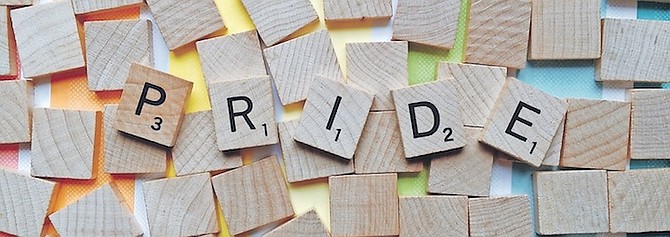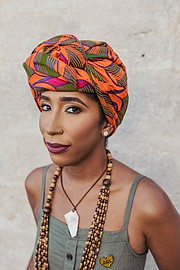IN many countries all over the world, today marks the beginning of Pride month. It is most often celebrated in June because the Stonewall riots - catalyst for the LGBTQI+ movement in the US — took place in June 1969.
Gay bars and other hangouts for LGBTQI+ people were regularly raided by police, and a group of people were tired of it. They decided to stand against this discrimination and days of demonstrations followed. This inspired people all over the US to start organisations and other groups, build movements and demand their civil rights.
On the anniversary of the Stonewall riot, gay pride parades were held in some major cities including New York City and Los Angeles.
Pride started as a refusal to be invisible, a demand for civil rights and resistance to institutional discrimination and violence.
The parades were places and ways to take up space, to be together in groups and to show the world gay people exist, deserve to live full, happy lives and were not going to bullied or shamed into silence. They were a public claim to human rights.
Today, the meaning and purpose of Pride have expanded. There is focus on visibility, community and freedom, also an emphasis on current, (hyper-)local issues. Pride events are advocacy spaces, educational opportunities and introductions to organising. They often provide access to necessary services.
In recent years, Pride has taken a turn. As LGBTQI+ rights are being recognised as human rights and it becomes easier to support the protection of LGBTQI+ people and the expansion of rights through legislation, policy and practice, more people want to participate in Pride.
In addition, more people are comfortable being in the company of LGBTQI+ people and readily reap the benefits of being in proximity to the community.
As has been the case for many years, women feel more comfortable in LGBTQI+ spaces, especially gay clubs, because they are less likely to be violated.
It has, for example, become common practice for bachelorette celebrations (for heterosexual people) to take place in LGBTQI+ venues because they are considered more fun, due in part to the feeling of safety.
The fetishization of LGBTQI+ people, of course, is a factor, and it is no secret people who do not even support particular communities go out of their way to benefit from their talent and the spaces they create for themselves.
Pride, to people on the outside and to some people (mostly of considerable privilege) in the community, is seen as a party. It is rainbow sequined jackets, We Are Family booming from a speaker system on the back of a truck, candy being tossed into crowds on sidewalks, free condoms of all kinds and special guest performances. There are people carrying banners, people working information booths, people handing out flyers related to advocacy issues, but the attention on them is negligible in comparison with the more flashy happenings.
Pride is a money-making opportunity for the corporate world and those actors are more than ready to do the absolute least in a show of “allyship” in exchange for their logos on Pride websites and merchandise, increased brand recognition and tax benefits.
If you are not paying attention or unwilling to try, it is hard to tell the difference between LGBTQI+ allies and parasites. At this time of year, it is easy to find rainbow anything. Banners, plates, napkins, socks, party horns, headbands, t-shirt, phone cases, stickers, pens, sheet sets, jewellery, hand sanitiser, welcome mats, plant pots and totebags with rainbows and rainbow colours are at your fingertips.
Some of your favourite brands may even change the colour of their products to incorporate rainbows. One popular candy brand changed their candies to white to draw attention to the rainbow symbolising the LGBTQI+ community. We see this corporate response to many issues and observances and one of the most popular is corporate pink-washing in which companies rush to produce pink items in October, but make no commitments or contributions toward ending breast cancer.
In recent years, LGBTQI+ community members in Toronto have spoken out about the commercialisation of Pride Toronto. Large corporations threw money at the organization and occupied a considerable amount of space with their branding.
A member of the board of Pride Toronto said there was no checklist for sponsors and sponsorship came without strings attached. This, of course, means there was no criteria for corporations that wanted to use Pride as a marketing opportunity with no concern for or commitment to the LGBTQI+ community or its wellbeing. At the parade in 2016, people chanted, “Let’s get critical! Pride is political!”
While Pride celebrations may include parades and parties, designed for LGBTQI+ people to enjoy themselves, it is important to remember how it started and why it exists. For many LGBTQI+ people each year, Pride is the first time they are able to engage with other people in the community. It is the place they feel safest asking questions and accessing resources. It is where parents, teachers and other people responsible for young people get information, connect with credible sources and find support. It is where some well-meaning people learn how to be true allies.
Pride is also where corporations take up space and try to make money. They sell Pride-themed goods and services, benefiting from the community without contributing to it. If you see a business using Pride symbols or language to promote their offerings, ask them why. Pay attention to the response. “It’s Pride month,” is not an acceptable response. Press them to find out why they are using Pride to promote their business. Ask them how, in quantifiable terms, they are supporting the LGBTQI+ movement. Are proceeds going to an organisation? Are they publicly supporting initiatives to promote, expand, and increase access to human rights for LGBTQI+ people? If not, run — don’t walk—away from there. They are co-opting a movement, centering themselves while ignoring the needs of the community whose name they are using.
Pride is for the LGBTQI+ community. It is for connection, for education. It is for access to services. It is for welcoming and being welcomed. It is for organising. It is for celebrating success to date, both personal and political. It is for amplifying advocacy messages. It is for being and feeling the fullness of who LGBTQI+ people are, individually and as a community, and embodying it without shame. Pride is resistance. It is saying no to heterosexism, it is saying no to hostility toward LGBTQI+, and it is rejecting and actively working to dismantle the systems of patriarchy, capitalism, and colonialism. Those systems do not serve us, and the future we need demands that we do not serve them either.
RECOMMENDATIONS
1. White Smoke by Tiffany D Jackson. This psychological thriller is about teenager Marigold who lives with her mother, stepfather, and siblings. The blended family is off to a fresh start in a strange neighbourhood. They have moved from California to the midwest, and Mari is hopeful that she can leave the secrets of her past behind. Between the oddities in their free house and her stepsister Piper’s creepy behaviour, Mari struggles to stay clean. It seems like the only thing that keeps her calm is her old habit, so she comes up with a plan to grow her own supply. Unfortunately for Mari, Piper’s invisible friend knows what she’s up to and there’s nothing she won’t do to stop her. Mari’s mother grows suspicious of her, her stepfather is endlessly protective of Piper, and younger brother Sammy seems to be the only one on her side. Something is wrong with this house, and they have to figure it out before the walls close in on their family.
2. Put your pronouns in your email signature. Let people know how you would like them to refer to you when they are not using your name. Common pronouns are she/her, he/him, and they/them. You can put them next to your name in parentheses. It is also helpful to put them in your name when you sign in to meetings on platforms like Zoom, Microsoft Teams, and Cisco Webex. By including your pronouns, you make it easy for people to address and reference you in the way you want, make it easy for people whose pronouns may not be easily and correctly guessed to share theirs, and help normalise the practice for everyone so no particular group of people is alone in explicitly stating theirs.






Comments
Use the comment form below to begin a discussion about this content.
Sign in to comment
Or login with:
OpenID